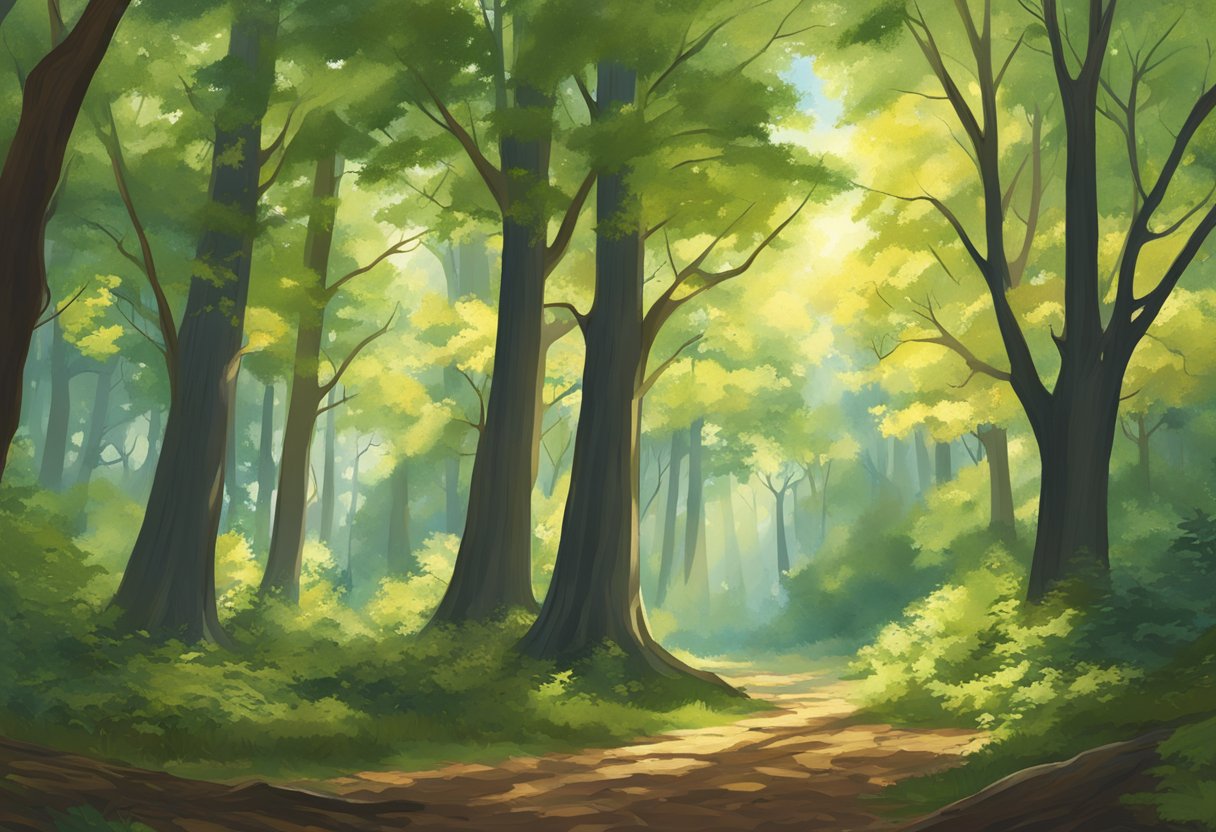
New Jersey is known as the Garden State, and for a good reason. The state is home to an abundance of plant life, including a variety of trees that are native to the area. These trees play an essential role in the ecosystem and provide numerous benefits to the environment and the people who live in the state.

When it comes to common trees in New Jersey, there are several species that stand out. Some of the most prevalent trees in the state include the red oak, sugar maple, and black cherry. These trees are known for their beauty, durability, and usefulness in various industries, such as construction and furniture making. Additionally, they provide habitat for wildlife, help purify the air, and contribute to the overall health of the environment.
Whether you are a nature enthusiast or just someone who appreciates the beauty of trees, learning about the common trees in New Jersey can be a rewarding experience. By understanding the different types of trees that grow in the state, you can gain a deeper appreciation for the natural world around you and the role that trees play in sustaining life.
New Jersey is home to a diverse range of native and common trees, from deciduous to evergreen varieties. These trees play a vital role in the state’s ecosystem, providing habitat for wildlife and contributing to the state’s natural beauty.
Deciduous trees are those that lose their leaves in the fall and regrow them in the spring. Some of the most common deciduous trees in New Jersey include the oak, flowering dogwood, red oak, American beech, hickory, walnut, tulip tree, sweet birch, chestnut, black cherry, American elm, American linden, and red maple.
The leaves of these trees provide food and shelter for a variety of wildlife, including birds, squirrels, and insects. In the fall, the foliage of deciduous trees turns vibrant shades of red, orange, and yellow, creating a stunning display of color across the state’s landscape.
Evergreen trees are those that retain their leaves year-round. Some of the most common evergreen trees in New Jersey include the pine barrens, American holly, black spruce, Virginia pine, pitch pine, and white pine.
These trees are well-suited to the state’s climate, and many are found in the state’s natural habitats, including forests, wetlands, and coastal areas. Evergreens provide shelter and food for a variety of wildlife, and their year-round foliage adds color and texture to the landscape.
Overall, New Jersey’s native and common trees are an important part of the state’s natural heritage. Whether you’re exploring the state’s parks and forests or simply enjoying the view from your own backyard, take the time to appreciate these beautiful and essential plants.

New Jersey’s common trees play a vital role in providing habitats for various wildlife species. Native plant species such as the American Beech, Red Maple, and Black Cherry provide food and shelter for deer, squirrels, and birds. The Eastern Hemlock, which grows in moist soil and shade, is a crucial habitat for the eastern tiger swallowtail butterfly. The River Birch, which thrives in wet soils and riverbanks, is a habitat for the Baltimore Oriole and the Prothonotary Warbler.
Common trees in New Jersey also provide numerous environmental benefits. They help reduce the impact of floods by absorbing water and reducing soil erosion. The American Sycamore, which grows in moist soil and shade, helps purify the air by filtering pollutants. The Red Oak, which is commonly found in mixed hardwood forests, provides shade and helps cool the environment during hot summers.
Conserving New Jersey’s common trees is essential for maintaining the state’s ecological balance. The state’s Department of Agriculture has implemented programs to promote the planting of native species and protect forests from invasive species. The preservation of these trees also supports the state’s economy by providing a sustainable source of timber and other forest products.
In conclusion, New Jersey’s common trees are not only aesthetically pleasing but also provide crucial habitats for wildlife and environmental benefits. Conserving these trees is vital for maintaining the state’s ecological balance and promoting a sustainable future for generations to come.